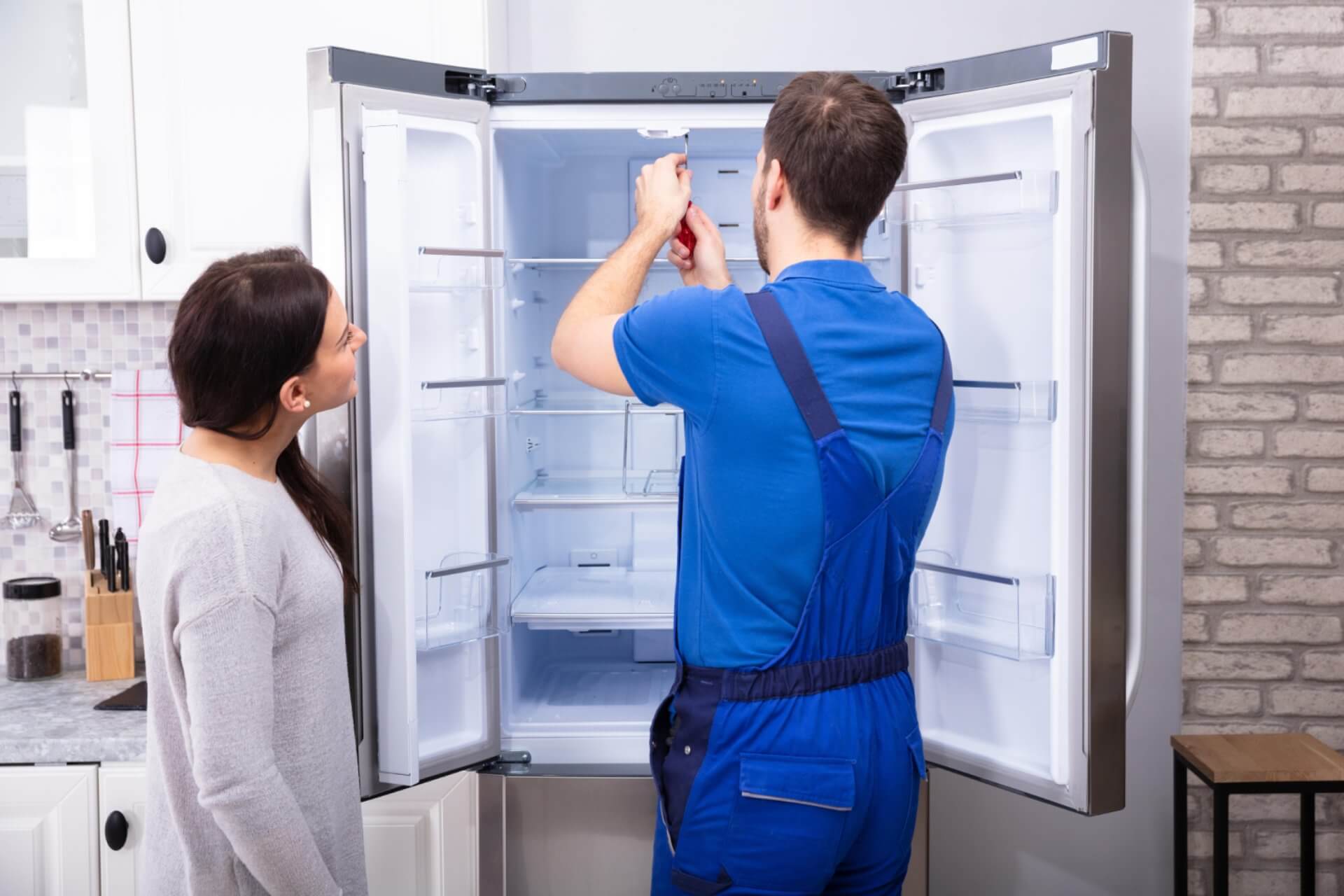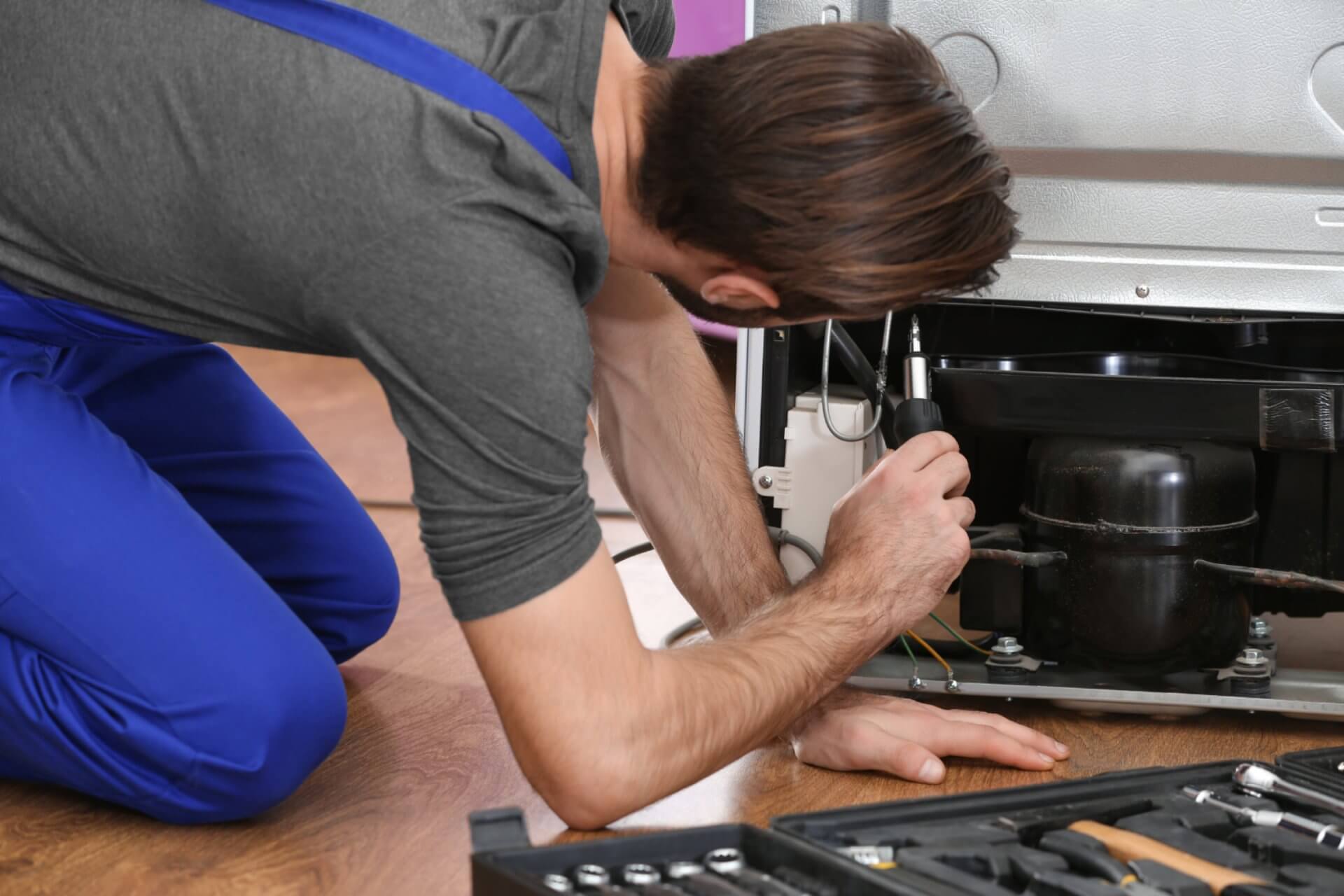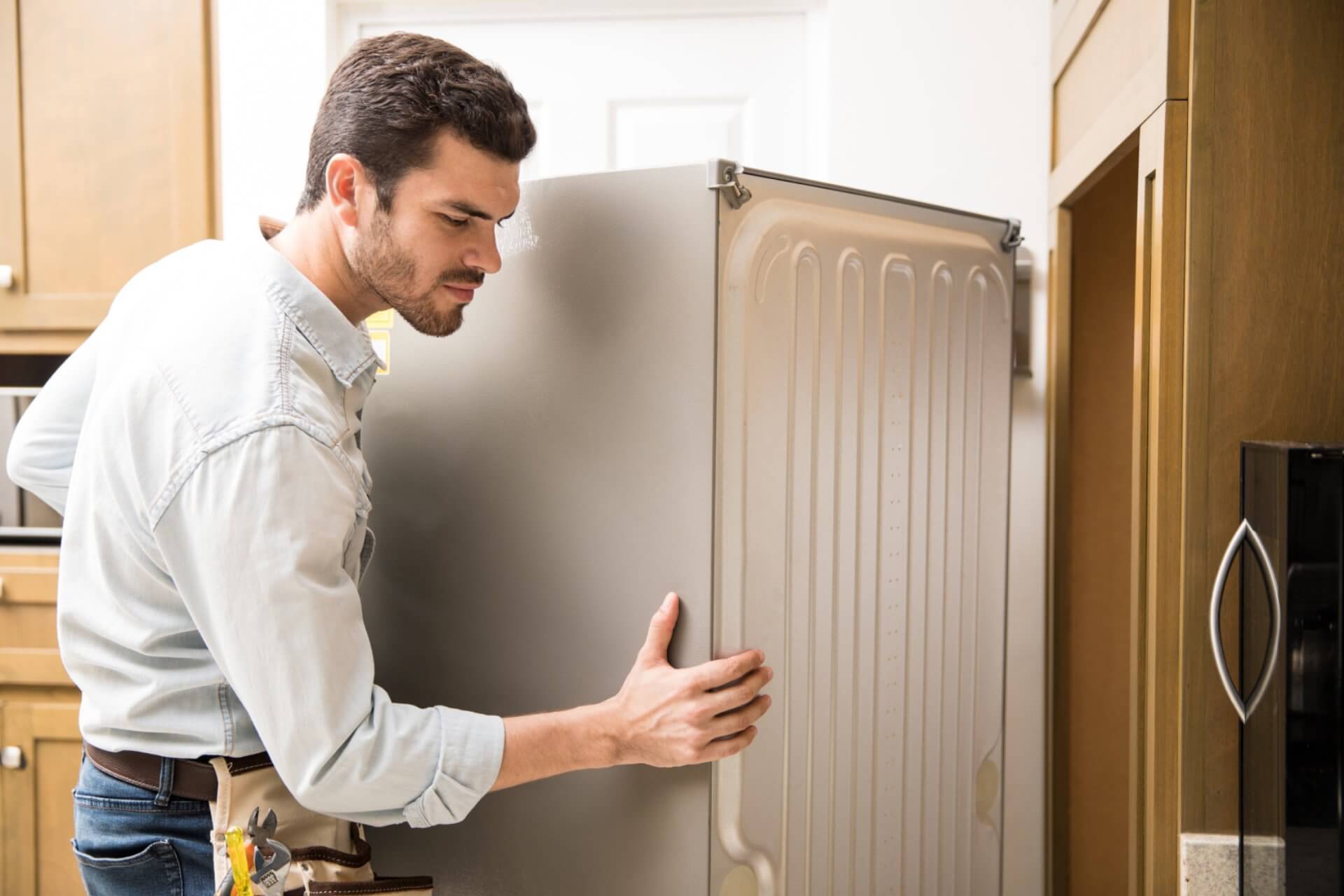How to Extend the Life of Your Refrigerator: 7 Maintenance Tips
Your refrigerator is probably the hardest working appliance in your home. Running 24/7, it quietly keeps your food fresh and your drinks cold year after year. But here's something many homeowners don't realise - the average refrigerator should last 10-15 years, but many die prematurely due to simple neglect.
I've seen countless refrigerators end up at the tip years before their time, all because their owners missed a few basic maintenance steps. The good news? With just a little bit of regular care, you can add 3-5 years to your fridge's lifespan and save hundreds on energy bills in the process.
This guide covers the 7 most important maintenance tasks that will keep your refrigerator running efficiently for years to come. Even better - most of these tasks take less than 15 minutes and require no special tools!
![Well-maintained, clean refrigerator with open door]
Why Refrigerator Maintenance Matters
Before we dive into the specific tips, let's understand why maintenance is so crucial:
- Cost savings — A properly maintained fridge uses up to 30% less electricity
- Extended lifespan — Regular care can add 3-5 years to your refrigerator's life
- Food safety — Consistent temperatures protect your family from foodborne illness
- Better performance — Your food stays fresher, longer
- Reduced repairs — Most major breakdowns are preceded by minor issues that maintenance would catch
With new refrigerators costing $1,000-3,000, investing a few minutes each month in maintenance offers one of the best returns on your time you can get.
7 Essential Maintenance Tips for a Longer-Lasting Refrigerator
1. Clean the Condenser Coils Every 6 Months
Why it matters: Those dusty coils at the back or bottom of your refrigerator are crucial for heat exchange. When they're covered in dust, pet hair, or kitchen grease, your fridge has to work much harder to cool. This single maintenance task can improve efficiency by up to 30% and is responsible for preventing approximately 70% of common refrigerator problems.
How to do it:
- Unplug your refrigerator (safety first!)
- Locate the condenser coils — These are typically:
- At the back of older fridges
- Behind the kick plate at the bottom front on newer models
- Sometimes accessed from the rear bottom
- Remove the cover if necessary (often just snaps off)
- Vacuum thoroughly with a brush attachment
- Use a coil brush (available at Bunnings for about $20-25) to dislodge stubborn dust
- Vacuum again to remove loosened debris
- Replace any covers and plug the fridge back in
Pro Tip: Mark this task on your calendar for April and October each year. Homes with pets should clean coils quarterly as pet hair significantly accelerates buildup.
![Before and after photos of cleaning condenser coils]
2. check and Replace Door Seals (Gaskets)
Why it matters: The rubber gaskets around your refrigerator doors create an airtight seal that keeps cold air in and warm air out. As they age, they can crack, tear, or simply lose elasticity. A failing gasket forces your refrigerator to work harder, increasing energy usage by up to 25%.
How to do it:
- The dollar bill test — Close the door on a dollar bill or piece of paper, then try to pull it out:
- If it slides out easily, the seal is failing in that spot
- Test multiple locations around each door
- Visual and tactile inspection:
- Look for cracks, tears, or mould
- Feel for areas that seem looser than others
- Clean existing seals first:
- Mix warm water with mild dish soap
- Wipe thoroughly with a soft cloth
- Pay special attention to folds where crumbs collect
- Dry completely
- Replace damaged seals:
- Order replacement gaskets specific to your model
- Follow the manufacturer's installation instructions
- Most snap or push into a channel around the door
Maintenance Schedule: check seals every 3 months and clean them thoroughly. Replace when they show signs of damage, typically every 5-7 years.
![Hand performing dollar bill test on refrigerator door seal]
3. Maintain Optimal Temperature Settings
Why it matters: Running your refrigerator too cold not only freezes your lettuce but also wastes energy and strains the compressor. According to Food Standards Australia New Zealand (FSANZ), the safe temperature range is 3-5°C for the refrigerator and -18°C for the freezer.
How to do it:
- Purchase fridge thermometers — They cost just $8-15 at Bunnings or Kmart
- Place thermometers in different sections of both compartments
- check after 24 hours and adjust settings if needed
- Aim for 3-4°C in the main compartment — This is the ideal balance of food safety and energy efficiency
- Keep the freezer at -18°C — Cold enough to maintain food quality without excessive energy use
- Recheck temperatures seasonally — Your fridge works harder in summer and settings might need adjustment
Energy Saving Tip: For every degree colder than necessary, your refrigerator uses about 5% more energy. Setting your fridge at 2°C instead of 4°C could waste $20-30 per year in electricity.
![Refrigerator thermometer showing optimal 4°C temperature]
4. Keep Your Refrigerator Level
Why it matters: A refrigerator that's not level can cause numerous problems: doors may not close properly, the cooling system may operate inefficiently, and in some cases, refrigerant might not flow correctly. This simple adjustment prevents uneven wear on the compressor and door hinges.
How to do it:
- Place a spirit level on top of the refrigerator
- check both front-to-back and side-to-side leveling
- Adjust the leveling feet at the front of the unit:
- Most can be turned by hand or with pliers
- Clockwise raises that corner
- Counterclockwise lowers it
- Aim for slightly higher in the front — A 6mm tilt towards the back ensures doors close properly
- Verify the doors close and seal completely after adjustment
When to cheque: After any refrigerator move, floor renovation, or if you notice doors not closing properly.
![Using a spirit level to adjust refrigerator feet]
5. Clean the Interior Regularly
Why it matters: Regular interior cleaning doesn't just prevent odours and cross-contamination—it also preserves the plastic interior from staining and degradation from food acids. Plus, it gives you the opportunity to spot problems while they're still minor.
How to do it:
- Schedule a monthly deep clean — Pick a consistent day like the first Saturday
- Remove all food items — Use a cooler for perishables if needed
- Take out removable parts:
- Shelves
- Drawers
- Compartment covers
- Wash removable parts with warm, soapy water
- Clean interior surfaces with a solution of:
- 2 tablespoons baking soda
- 1 litre warm water
- Pay special attention to:
- Door seals
- Drain holes
- Air vents between compartments
- Dry thoroughly before replacing parts and food
Odour Prevention Tip: Keep an open container of baking soda in both the refrigerator and freezer compartments, replacing every 3 months. For stronger odours, a shallow dish of coffee grounds works wonders.
![Clean, organised refrigerator interior]
6. Manage Proper Airflow (Inside and Out)
Why it matters: Refrigerators cool effectively only when air can circulate properly. Blocked vents inside the fridge prevent cold air distribution, while inadequate space around the unit traps heat that should be dissipating from the condenser coils.
How to do it: Inside airflow:
- Identify all air vents inside the refrigerator and freezer
- Keep food at least 5cm away from all vents
- Follow the 2/3 rule — Keep the fridge about 2/3 full for optimal cooling efficiency
- Too empty wastes energy as cold air spills out when opened
- Too full restricts airflow and creates warm spots
- Organise using the dedicated zones — Drawers and door compartments are designed for specific items
Outside clearance:
- Maintain at least 5cm clearance at the sides
- Keep 7-10cm clearance at the back
- Ensure top vents aren't blocked by items stored on top
- check clearances after cleaning or any kitchen rearrangement
Storage Tip: Use clear storage containers to organise similar items together. This reduces door-open time (saves energy) and prevents forgotten food from spoiling at the back of shelves.
![Properly arranged refrigerator showing clear air vents and appropriate food spacing]
7. Care for the Water Dispenser and Ice Maker
Why it matters: If your refrigerator has a water dispenser or ice maker, these systems need regular maintenance to prevent mineral buildup, water leaks, and mechanical failures. These components are also among the most expensive to repair when they fail.
How to do it:
- Replace the water filter every 6 months or according to manufacturer guidelines:
- Mark replacement dates on your calendar
- Some models have indicator lights
- Even without taste issues, invisible contaminants can bypass old filters
- Clean dispenser components:
- Wipe nozzles with white vinegar solution
- Remove and wash the drip tray
- Sanitize the ice bin quarterly by emptying and washing with mild soap
- Flush the system after filter changes:
- Discard the first 10-15 glasses of water
- Throw away the first batch of ice
- check water line connections for leaks or kinks twice yearly
Water Quality Tip: If you live in an area with hard water (common in many parts of Australia), consider a whole-house water softener to extend the life of your refrigerator's water system.
![Hand replacing refrigerator water filter]
Creating a Maintenance Schedule
To make refrigerator maintenance part of your routine, here's a simple schedule to follow:
Monthly:
- Clean the interior thoroughly
- check temperature with thermometers
- Verify door seals are clean and functioning
Quarterly (Every 3 Months):
- Clean condenser coils (more often with pets)
- check and clean drain holes
- Empty and sanitize ice maker bin
- Test door seals with dollar bill method
Bi-Annually (Every 6 Months):
- Replace water filter
- check leveling
- Vacuum behind and underneath the unit
- Cheque/clean fan blades if accessible
Annually:
- Examine water lines for leaks or kinks
- check gaskets for replacement needs
- Consider professional service if the unit is over 5 years old
When to Call a Professional
While these maintenance tips will prevent most problems, some situations warrant professional attention:
- Unusual noises — Particularly loud clicking, knocking, or grinding
- Excessive frost buildup in freezer despite proper maintenance
- Temperature inconsistencies that persist despite adjustments
- Water leaking onto the floor
- Compressor running constantly without adequate cooling
Remember: According to AS/NZS 3000 (Australian Electrical Safety Standards), any repairs involving electrical components should only be performed by qualified professionals.
Conclusion
Your refrigerator represents a significant investment, and with today's rising costs, making it last longer makes financial sense. The beauty of these maintenance tasks is that they're simple enough for anyone to perform, require minimal tools, and can literally double the functional lifespan of your appliance.
I've seen firsthand how these simple habits can transform a struggling 5-year-old refrigerator into one that runs efficiently well into its second decade. Not only will you save money on replacements and repairs, but you'll also reduce your energy consumption and keep food fresher, longer.
Mark these tasks on your calendar, spend a few minutes each month on maintenance, and your refrigerator will thank you with years of reliable service!
![Person performing routine maintenance on refrigerator with maintenance checklist visible]
Frequently Asked Questions (FAQs)
How often should I really clean the condenser coils? For the average kitchen, clean them every 6 months. If you have pets (especially cats or dogs that shed), increase to every 3 months. This single task can improve efficiency by up to 30% and prevent compressor strain.
What's the proper way to organise food in a refrigerator? Follow your refrigerator's design: store dairy products in the designated dairy compartment, meats in the coldest part (typically the bottom drawer), produce in crisper drawers with proper humidity settings, and avoid storing highly perishable items in the door where temperature fluctuates most.
Is it bad to put hot food directly into the refrigerator? Yes, but not for the reason most people think. While modern refrigerators can handle the cooling load, hot food raises the internal temperature, causing nearby foods to warm up temporarily. This temperature fluctuation can affect food safety and quality. Let hot foods cool for 20-30 minutes before refrigerating.
Do refrigerators use more electricity as they age? Yes. Studies show that a 10-year-old refrigerator uses approximately 15-20% more electricity than when it was new, even with perfect maintenance. However, with poor maintenance, this can jump to 30-50% increased energy usage.
How much money can proper refrigerator maintenance save? The average Australian household can save $50-100 per year in electricity costs through proper refrigerator maintenance. Add the extended lifespan value (3-5 extra years before replacement), and proper maintenance saves about $900-1,500 over the life of the appliance.
Is it worth repairing an old refrigerator? As a general rule, if a refrigerator is less than 8 years old and the repair costs less than half the price of a new unit, repair makes economic sense. Beyond 8 years, evaluate energy efficiency gains of newer models in your decision, as technology improvements might offset the cost difference.

About Julian
Home appliance enthusiast and DIY repair specialist with a passion for helping others save money on appliance maintenance.
Related Articles

Freezer Not Cold Enough? 6 DIY Fixes for Semi-Frozen Food | Australian Guide

10 Warning Signs Your Fridge Compressor is Failing | Australian Guide 2025

